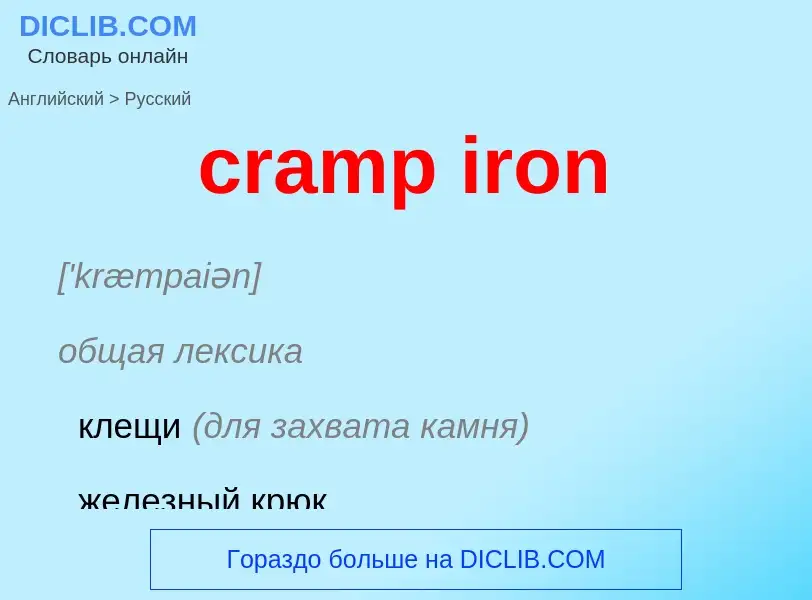Traduzione e analisi delle parole da parte dell'intelligenza artificiale
In questa pagina puoi ottenere un'analisi dettagliata di una parola o frase, prodotta utilizzando la migliore tecnologia di intelligenza artificiale fino ad oggi:
- come viene usata la parola
- frequenza di utilizzo
- è usato più spesso nel discorso orale o scritto
- opzioni di traduzione delle parole
- esempi di utilizzo (varie frasi con traduzione)
- etimologia
cramp iron - traduzione in russo
['kræmpaiən]
общая лексика
клещи (для захвата камня)
железный крюк
техника
клещи (для захвата камня)
нефтегазовая промышленность
якорь
Definizione
Wikipedia
Wolfsangel (German pronunciation: [ˈvɔlfsˌʔaŋəl], translation "wolf's hook") or Crampon (French pronunciation: [kʁɑ̃pɔ̃]) is a heraldic charge from Germany and eastern France, which was inspired by medieval European wolf traps that consisted of a Z-shaped metal hook (called the Wolfsangel, or the Crampon in French) that was hung by a chain from a crescent-shaped metal bar (called the Wolfsanker, or the Hameçon in French). The stylized symbol of the Z-shape (also called the Doppelhaken, meaning the "double-hook") can include a central horizontal bar to give a Ƶ-symbol, which can be reversed and/or rotated; it is sometimes mistaken as being an ancient rune due to its similarity to the "gibor rune" of the pseudo Armanen runes.
Early medieval pagans believed that the Wolfsangel symbol possessed magical powers, and could ward off wolves. It became an early symbol of German liberty and independence after its adoption as an emblem in various 15th-century peasant revolts, and also in the 17th-century Thirty Years War. In pre-war Germany, interest in the Wolfsangel was revived by the popularity of Hermann Löns's 1910 novel Der Wehrwolf, which follows a hero in the Thirty Years war. The Ƶ-symbol was later adopted by the Nazi Party, and was used by various German Wehrmacht and SS units such as the Waffen-SS Division Das Reich and the Waffen-SS Division Landstorm Nederland. The Anti-Defamation League, and others, list the Ƶ-symbol as a hate and a neo-Nazi symbol.

![[[Deutsche Kinderschar]]}} for children [[Deutsche Kinderschar]]}} for children](https://commons.wikimedia.org/wiki/Special:FilePath/Bundesarchiv Bild 183-J15063, Familie mit 12 Kindern.jpg?width=200)

